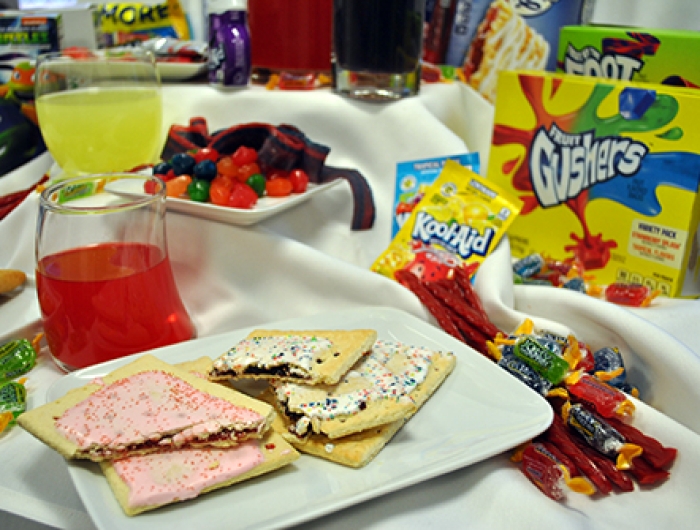43% of products marketed to kids are artificially dyed, study finds

Red 40, yYellow 5, and other dyes cause hyperactivity and other behavioral problems in children
Candies marketed to kids had the highest proportion of products with artificial dyes (96 percent) followed by fruit-flavored snacks (95 percent), drink mixes and powders (90 percent), and frozen breakfast foods (86 percent).
Researchers at the University of North Carolina Asheville catalogued foods, as well as tooth pastes, mouthwashes, and vitamins, in one large supermarket in that state, looking for cartoons, licensed characters, kid-oriented prizes, and other cues that the products were marketed to children. They identified 66 companies behind the products, with Kraft Foods producing the most. 66 percent of the 105 Kraft foods marketed to children had artificial food dyes, according to the study. In some products, dyes were used in place of healthful ingredients, with dyes like Red 40 and Yellow 5 helping simulate the presence of carrots or orange juice.
Other research conducted over the past several decades has found that dyes are associated with hyperactivity and other behavioral problems in children. That has spurred the nonprofit Center for Science in the Public Interest to petition the Food and Drug Administration to ban Red 3, Red 40, Yellow 5, Yellow 6, Blue 1, Blue 2, Green 3, and Orange B (a dye permitted only on sausage casings). The European Union requires a warning label on most dyed foods indicating that such products “may have an adverse effect on activity and attention in children,” encouraging manufacturers to switch to natural (or no) colorings.
“While some companies have sought favorable publicity by announcing moves away from dyes and other artificial ingredients, it is clear that manufacturers such as Kraft, General Mills, and PepsiCo have a long way to go,” said CSPI president Michael F. Jacobson, co-author of the study. “These companies are all aware of the science surrounding dyes and children’s behavior, so there’s really no excuse for them to continue using these discredited, neurotoxic chemicals in food. That’s especially true when the chemicals in question are performing an exclusively cosmetic, or in some cases deceptive, function.”
“When four in 10 child-oriented products in the grocery store contain at least one artificial food dye, it becomes difficult for parents who want to eliminate dyed foods from their kids’ diets,” said UNC Asheville assistant professor Ameena Batada, lead researcher on the paper. “Companies should make faster progress replacing dyes, but the FDA could make parents’ jobs a lot easier by revoking its approval for this class of chemicals.”

In January, CSPI published Seeing Red, a report that takes a withering look at the FDA’s inaction on dyes in the face of what CSPI said is a growing consensus among researchers that avoiding food dyes benefits some children. Since 2011, when the FDA last convened an advisory panel to consider dyes’ impact on children, eight detailed analyses, including two meta-analyses, concluded that excluding food dyes, or a diet that eliminates dyed foods and certain other foods and ingredients, reduces behavioral problems in some children.
A recent Change.org petition urging FDA to ban the dyes has already collected over 98,000 signatures.

